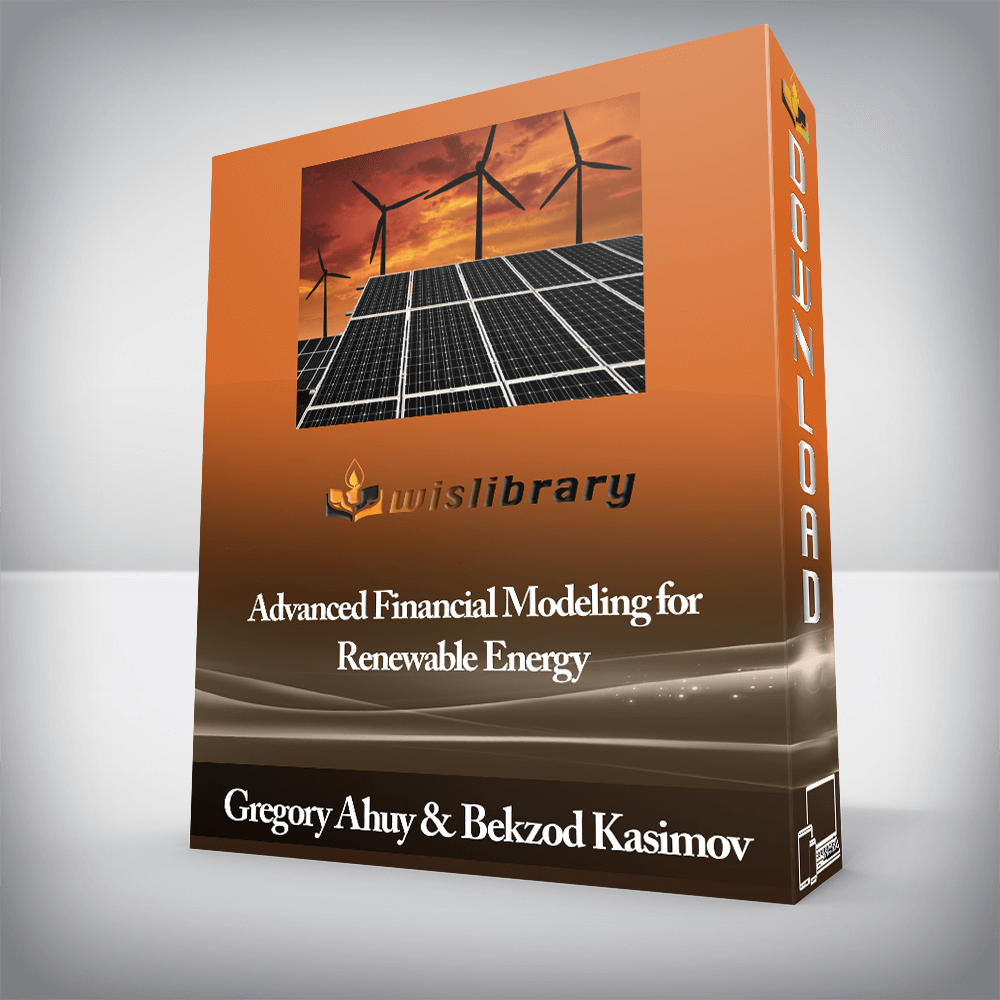

Advanced Financial Modeling for Renewable Energy (Tax Equity Flip Structure) course will give you the skills to develop and analyze project finance models for wind and solar projects in the US market.
Advanced Financial Modeling for Renewable Energy (Tax Equity Flip Structure) course will give you the skills to develop and analyze project finance models for wind and solar projects in the US market. The course covers essential topics including allocation of tax benefits, tax equity sizing, debt sizing and funding, investment returns, and will provide you with a robust financial modeling skillset for analysis of tax equity transactions.
In an online environment, you will build a financial model suitable for advanced analysis of tax equity flip structures for wind and solar projects.
This course will provide step-by-step instructions on how to size tax equity investment, back-leverage loan, and how to estimate the sponsor’s equity return.
By the end of this course, you will be able to build complex, real-life project finance models to analyze tax equity flip structures.
Project finance models are used to assess the risk-reward of lending to and investing in an infrastructure project. The project’s debt capacity, valuation and financial feasibility depend on expected future cash flows generated by the project and a financial model is built to analyze this. In the tax equity flip structures, there is additional complexity related to the IRS tax rules that have to be reflected in the financial model. On top of that, we have to be able to correctly size the back-leverage debt in the downside scenario, taking into account and reflecting the tax equity’s seniority in the financial model.
In this course, we will model a complex tax equity flip structure for wind and solar projects in excel.
This is the same comprehensive financial training used to prepare analysts and managers at top financial institutions and infrastructure funds.
The course length is over 14 hours.
First, we will review how renewable energy projects get financed, so we understand all the essential components of project finance transaction.
Then, we will go over the case study and review modeling methods to improve our productivity in excel. We will then dive into building our advanced financial model. We will model the tax benefits allocation and cash distributions before adjustments between partners, which will give us the correct cash flow to the parties.
Next, we will size a preliminary back-leverage loan and model the construction funding. Once we have the construction funding, we will work on the adjustments that have to be made to the tax benefits allocated to the tax equity partner. We will implement the IRS requirements in the financial model (capital accounts, DRO, Qualified Income Offset, outside basis). This will allow us to size the tax equity’s investment correctly.
We will then finalize the calculations of the cash flow available for the distributions to the sponsor. We will have to incorporate the DSCR lock-up and default covenants, and debt service reserve account into the calculations of the sponsor’s cash flow to get to the sponsor’s IRR.
Next, we will work on scenario analysis to find a tax equity transaction structure that could enhance the value of the project for the sponsor and the tax equity partner.
And, finally, we will work on modeling the partners’ equity return when the sponsor exercises his buyout option. For those, who are interested in the accounting side of the tax equity transaction, we will also include the discussion and modeling of the HLBV accounting.
Yes, if you need to build, review or analyse project finance models for wind and solar projects in the United States.
Typical students include analysts, managers, senior managers, associate directors, financial advisors, financiers and CFOs from project companies, investment banks, private equity and infrastructure funds.
Note that this is an advanced financial modeling course, and it is expected that you know how to model the project finance models for renewable energy projects. Most of our students take our other course “Project Finance Modeling for Renewable Energy” before taking the advanced course.


Advanced Financial Modeling for Renewable Energy (US) – Tax Equity Flip
There are no reviews yet.
You must be <a href="https://wislibrary.net/my-account/">logged in</a> to post a review.